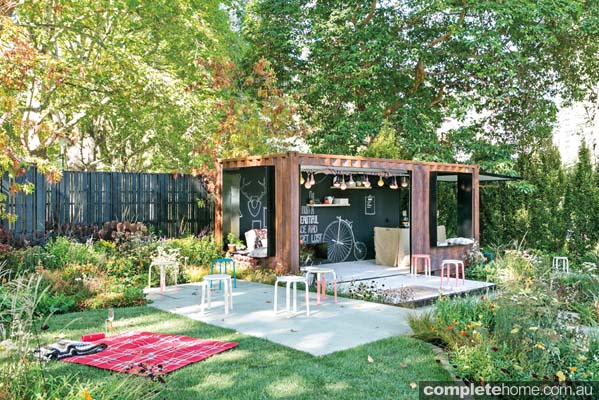It’s time to take responsibility and eradicate bad design and introduce delightful, good design in our social spaces
So, I take it that you’re reading this delightful magazine because you value good design, as I do. Like me, I imagine you feel that a life in a turgid grey world of dank, dark corridors, sunless rooms and bare walls is a much diminished one. We want our spirits lifted, our possibilities extended and our social exchanges fulfilling. Good design helps us reach these heights; bad design shuts us down.
But where does our personal boundary on responsibility for good design begin and end? Mostly we consider our own private domain, our home, our garden, perhaps some elements of our workspace, are within our remit. But accountability for the design of places and spaces beyond this realm is less clear.
Well, it is time for us to grasp the nettle.
We must also take responsibility for the design of our neighbourhoods, town centres, schools, hospitals and regional shopping precincts. These are the places where we live half our lives, outside our homes.
Society lost its way sometime during the last century. Mostly we seem drawn to Victorian and Georgian houses and public buildings. But for 25 years after WWII, some dreadful mistakes were made that we are still living with today. Think, especially, of awful social housing schemes that delivered high-rise slums surrounded by fields of concrete, and of charmless suburban shopping centres set in acres of arid car parks that turned their backs to the world. This happened all over the developed world, and we have our share too. There are the high rises of Carlton in Melbourne, the expressways disfiguring Circular Quay in Sydney and Brisbane’s North Quay, and any number of insular big retail boxes in our suburbs.
The history and culture of a nation are written in its buildings, public spaces, towns and cities. We are attracted to Paris by Haussmann’s parks and boulevards, to London by Wren’s churches and to Florence by Brunelleschi’s il Duomo. Australia is beginning to create a design-led heritage in our remodelling of spaces in our big cities, but still too many of us spend our working and public leisure time in drab surroundings. Teachers and pupils slave away in school buildings that do nothing to spark their imagination, nurses and doctors operate in claustrophobic hospitals, and office workers surf the internet in campus-style office parks that too often mimic suburban retail boxes.
I worked for a while in a local government in New South Wales and became depressed by the poor design standards of proposed buildings and their surrounding space. Then I got angry. Now I want to get even.
There are three excuses commonly trotted out by developers and their apologists. These are that good design is a) Too expensive or that it is b) Too subjective, and the particularly egregious c) That if someone is prepared to pay for it, the design must be good enough.
Actually, these are myths. Let me enumerate:
a) Good design incorporating a set of sustainability principles will lower project lifetime costs. The real issue is that the costs of poor design are usually borne by someone other than the builder.
b) Furnishings may be a matter of taste and fashion but design is not. There are design principles. They are variously described as robustness, durability or sustainability; usefulness or efficiency; and beauty, or the ability to delight people.
c) Individuals often do not have the market power or frequently have little or no choice. They just have to live with a drab school, airless office or sunless apartment.
People must be at the heart of design for the built environment. Places that delight tend to be valued and cared for. Places that do not tend to cost us in crime, high maintenance, poor health and social exclusion.
These days, too much discussion about the public realm is in black and white terms — for or against. It is NIMBY (not in my backyard) versus short-sighted development. This typically leads to a win/lose result — developer wins, community loses — and often to a lose/lose result — no new development, no new jobs or activities, and bland, barren public spaces.
We need to move beyond this paradigm.
Community activists — you and me — should focus on pestering, nagging and insisting on good design outcomes in our streets, towns, cities and shopping precincts. We demand that our representatives, and some of us in appropriate forums, work with developers, including those from governments, to deliver good design outcomes. We deserve nothing less.
Written by John Tilston
Originally from Home Design magazine, Volume 17 Issue 6







